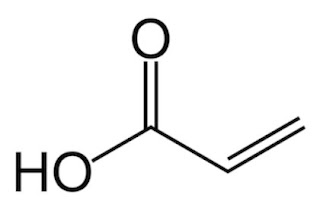SIRA 2017 – Guidelines for the European biorefining sector of the future
The revision of this document had been brewing
for months. The Strategic
Innovation and Research Agenda (SIRA) of the Bio-based Industries Consortium (BIC) reflects
the ambitions of its members and translates them into a set of specific actions
designed to deliver tangible results by 2020 and by 2030. It was first adopted
in 2013 and have just updated some days ago to consider the aims of BIC’s
newest members and the most recent technology and market developments, among
other issues. It might appear to be a short period but things are changing fast
in the European bioeconomy.
Moreover, the SIRA is the basis for road
mapping towards the BBI JU calls for proposals. The new version already applies
to the BBI JU 2017 call whose deadline for submission of proposals is 7
September. Therefore, it is a compulsory reading for all the actors that are
involved in the preparation of partnerships and proposals. Also, it will
determine the topics and strategies for the calls to come until 2020.
Taking all these into account, the SIRA is a
good tool to understand and envision the course the European advanced
biorefineries will sail in the medium-short term. I think it can be worthwhile
analyzing briefly some key general points and new approaches of the updated
edition.
Figure 1. Cover of the SIRA
From value chains to strategic orientations
The approach of the SIRA 2013 was structured
around 5 value chains: from lignocellulosic feedstock to advanced biofuels; the
next generation forest-based value chains; the next generation agro-based value
chains; emergence of new value chains from (organic) waste; the integrated
energy, pulp and chemicals biorefineries. The SIRA 2017 introduces the concept
of strategic orientations, the composing pillars of the biobased value chains. The
document is now articulated in four strategic orientations: sustainable biomass
feedstocks; innovative processes; innovative bioproducts for specific
applications; market uptakes.
Both editions emphasize the role of the value
chains. Thus, what is the change? In the first SIRA, value chains were well-defined
and bounded by the 5 references. New SIRA seeks the crossover between
conventional value chains. Boundaries disappear and novel possibilities are
opened. In the words of the document, “the multi-value-chain approach increases
opportunities to convert and valorise new feedstocks into a wide array of
bio-based products”.
Bioeconomy is integral to the circular economy
New elements that support the development of a
circular bioeconomy can be found throughout the updated SIRA. If we look through
overall strategic objectives: the first and the tenth ones include biowaste
(OFMSW or sludge from wastewater treatment) as new feedstock; the third one
claims for the mobilisation and utilisation of 15 % of currently unused sources
per year by 2020; the fifth one pursues solutions towards ‘zero-waste’ biobased
operations and closure of the cycles. In the section about supply of
sustainable feedstock (first strategic orientation), the residual and side
streams are constantly mentioned. This is only an example, the new version is full
of references to circular economy. Curiously, the word “circular” did not
appear in the previous SIRA.
Aquatic-based sources and CO2 as
promising feedstocks
According to the tenth overall strategic
objective, marine living resources represent a huge and almost untapped
reservoir of new bio-based products. A complete subsection of the first strategic
orientation highlights the wonders of aquatic feedstock and states that harnessing
the potential of seas and oceans sustainably is critical for Europe.
The biobased industries set out to capture and
use CO2 for agriculture applications or conversion into added-value
products. They will work closely with the SPIRE
public-private partnership to find new solutions for valorising CO2.
While SPIRE mainly focuses on various chemical technologies, the biobased
industries use biotechnological conversion.
TRL gain of RIA projects
The SIRA 2013 established 7 key measurable
objectives. Those 7 objectives and its associated KPIs (Key Performance Indicators)
remain unchanged and an additional objective is included in the new SIRA. It is
the “TRL gain” of technologies as compared with the level at the start of the
project. This objective affects Research and Innovation Actions. The number of
new and improved processing technologies validated with BBI projects should be
20 by 2020.




